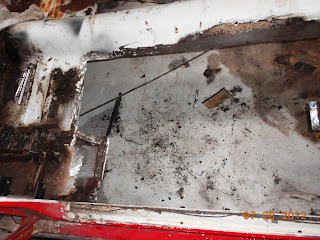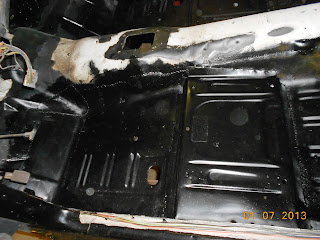September 2013
408
Stroker Engine Research
I am planning on building a street car, a strong
running street car. I do not plan on racing this car, just some spirited
driving around town. I know the
Cleveland engine is strong in its stock form, but I would like a little more oomph
and I would like to use my 4V closed chamber heads as well which I know are not good
performers on the street unless you rev to the upper limits or you throw some
more cubes at them. So, with the
comparable cost to machine work with all the stock components and the stroker
kit, I decided to go with the stroker to help those 4V’s breathe a little
better for me. Sub-frame connectors are
already welded in to help handle the added torque and HP.
I have talked to a few of the parts distributors and
read several forums with people talking on this subject of what to put into
your 408. I will not be racing this car
so H beam rods are not necessary, or a forged crank. The 9000 series cast crank will hold up just
fine for what I will be doing with this car.
It will have roller rockers, but as of this writing I am still unsure of
cam specs. That is the last thing that I
need to figure out.
I had to buy a replacement block as my original
block had already been into by someone
and bored .030 already. It had two very
rusty cylinders, one of which would have needed a sleeve so I just chose to
find an unmolested block to start with and plan on keeping the original as it
is. My donor block is yet to be unassembled but with the purchase very soon of
the stroker kit I will be tearing it apart and taking it to the machine shop to
start its new life. The original 4V
closed chamber heads will also be joining the block soon with the machinist.
Here are a few highlights of my plans, not in any
particular order…and these are just ideas, not all of them are set in stone yet
Heads
·
4V
factory iron heads
·
Only
deck enough to flatten
·
Roller
Rockers
·
Port
match with intake manifold and gaskets
·
Clean
out, smooth up exhaust ports, do not polish
·
ARP
head bolts
·
Hardened
valve seats
·
3
angle valve job
·
Stainless
steel, single groove valves.
·
Bronze
valve guides
·
New
valve springs, retainers, locks and steel spring seats
Block
·
Bored
.030 over
·
ARP
Main Cap bolts
·
High
volume oil pump with chromoly shaft
·
Rear
sump pan
·
Decked
Crank
·
9000
series cast crank
·
Dynamically
balance with flywheel and damper, 28 oz. balance
Pistons
·
Forged
pistons -16 cc dished (stroker kit)
·
New
rings (Total Seal Gapless) (stroker kit)
Rods
·
Forged
I Beam 6” (stroker kit)
·
ARP
rod bolts (stroker kit)
Cam
·
Hydraulic
flat cam, custom grind by Jerry Wilson
·
Roller
rockers
·
Push
rods.
·
Double
roller timing gear & chain--32 to 34 total advance with about 18 to 20
initial timing?
Intake manifold
·
Edelbrock
Performer
·
Port
match with heads and gaskets
·
ARP
manifold bolts
·
Holley
750 cfm, with electric choke
·
Electric
fuel pump
·
1”
carb spacer, Airflow
Research (tapered 4 hole) or open phenolic
Ignition
·
MSD
Digital 6A PN# 6201
·
MSD
Distributor # 8477 or 83501with steel gear (# 85813)
·
MSD
Blaster 2F Coil
Exhaust
·
Ceramic
long tube headers, 1 3/4” primaries and 3” collectors
·
Cross-over
H pipe right behind transmission
·
Magnaflow mufflers








































































